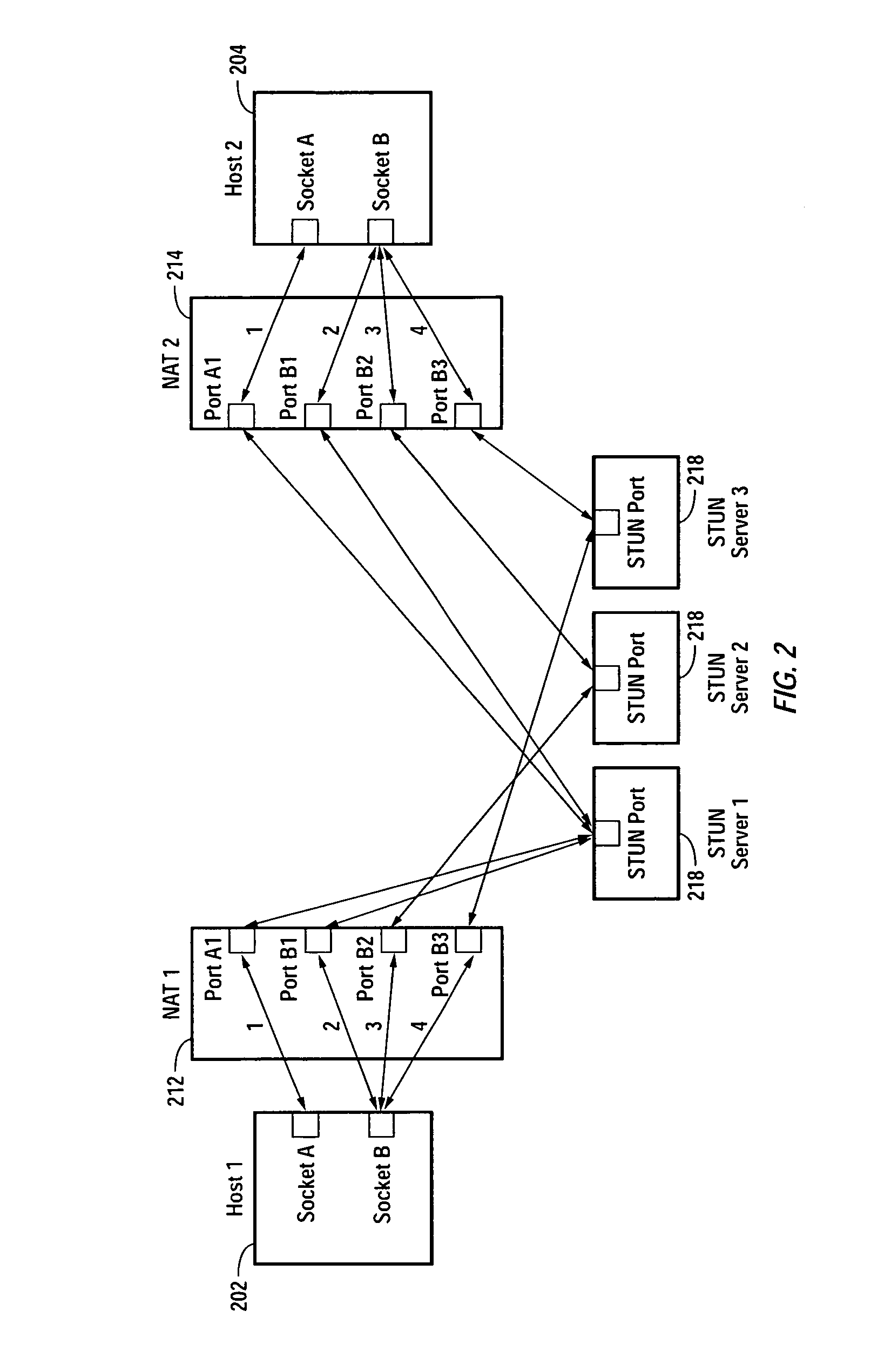Multiplayer peer-to-peer connection across firewalls and network address translators using a single local port on the local host
a network address translator and peer-to-peer connection technology, applied in the field of communication, can solve the problems of poor host online experience, complex problem, and non-trivial connection to achieve such a connection
- Summary
- Abstract
- Description
- Claims
- Application Information
AI Technical Summary
Benefits of technology
Problems solved by technology
Method used
Image
Examples
Embodiment Construction
[0020]As shown in the typical setup 10 of FIG. 1, two hosts 12 (e.g., game consoles) are connected each behind a NAT 14 (or a device that is a combination of a router, a firewall, and a NAT) and communicate with STUN servers 16 via a network 20 (e.g., the Internet). When attempting to exchange packets peer-to-peer, the host 12 may either use a random port number every time it attempts a connection, or it may use a predefined unique port number.
[0021]FIG. 2 shows an example of how two hosts 202, 204 with respective NATs 212, 214 trying to open a peer-to-peer channel with each other interact with the STUN servers 218 and find out about their respective NATs' information before attempting a connection using random ports. Each host 202, 204 creates two sockets (socket A and socket B) that are bound to two random ports. A first STUN packet is sent out through socket A of each host 202, 204 to STUN server 1. This will create port A1 on each NAT 212, 214. Then three STUN packets are sent t...
PUM
 Login to View More
Login to View More Abstract
Description
Claims
Application Information
 Login to View More
Login to View More - R&D
- Intellectual Property
- Life Sciences
- Materials
- Tech Scout
- Unparalleled Data Quality
- Higher Quality Content
- 60% Fewer Hallucinations
Browse by: Latest US Patents, China's latest patents, Technical Efficacy Thesaurus, Application Domain, Technology Topic, Popular Technical Reports.
© 2025 PatSnap. All rights reserved.Legal|Privacy policy|Modern Slavery Act Transparency Statement|Sitemap|About US| Contact US: help@patsnap.com



